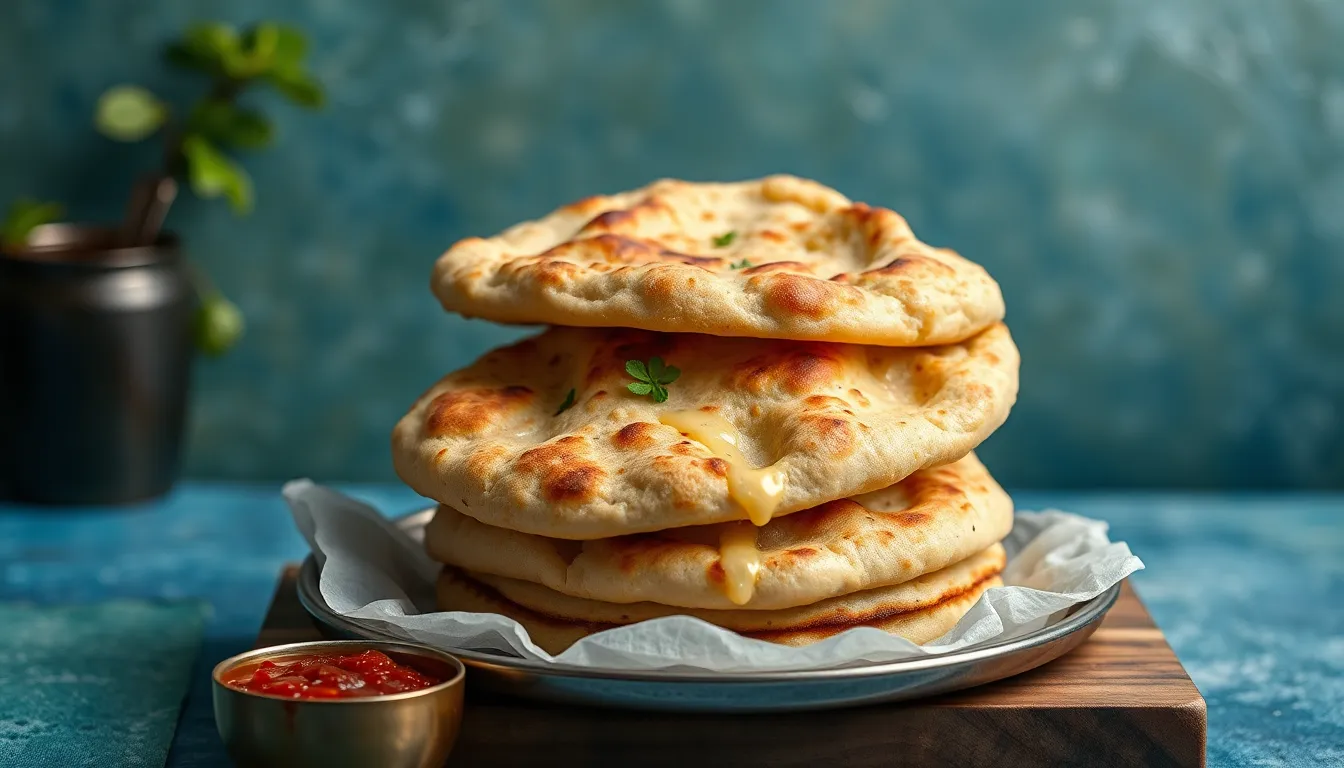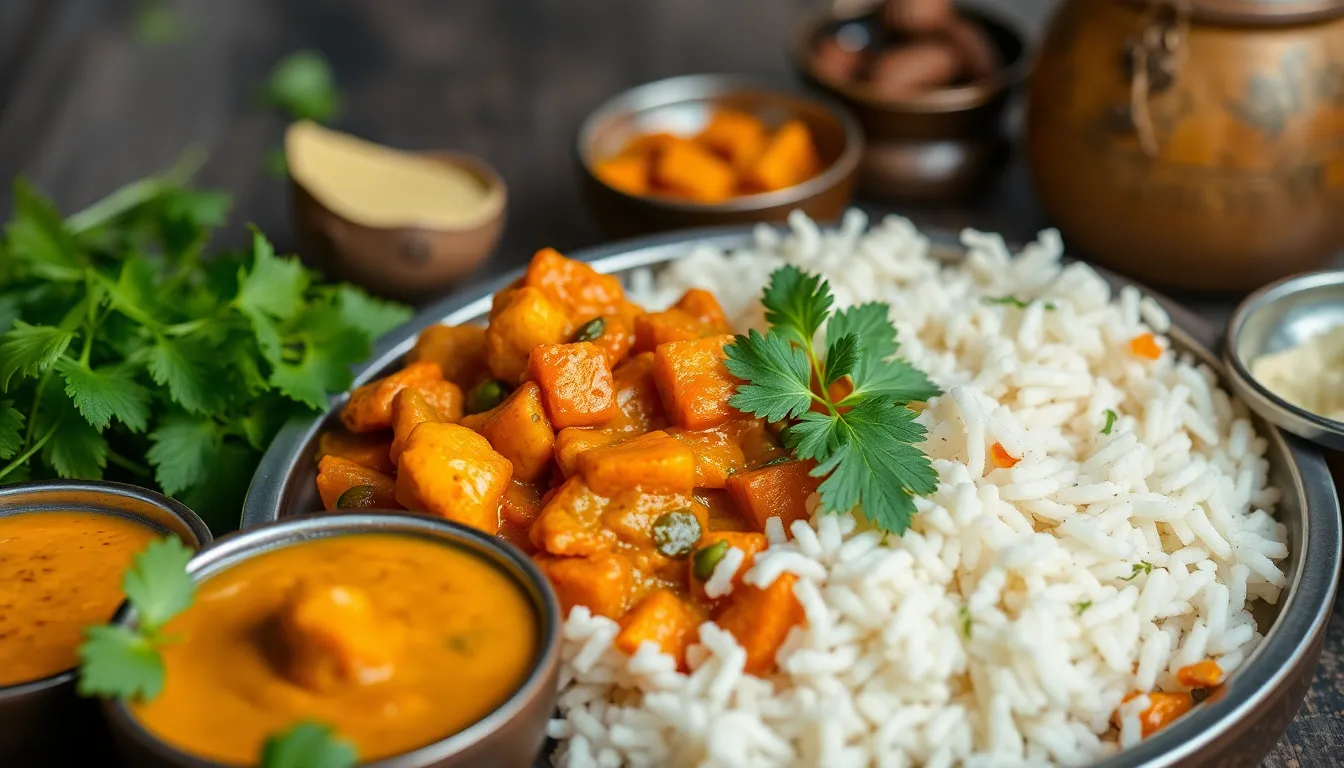The Art of Indian Bread: From Naan to Paratha – A Complete Guide
Introduction: A Journey Through Indian Bread
Indian cuisine is rich and varied, with bread serving as a crucial element in daily meals across the country. The significance of bread in Indian culinary traditions goes beyond mere sustenance; it embodies the diverse regional cultures and flavors of India. From the soft, pillowy naan of the North to the crispy, flaky parathas of the West, Indian breads tell stories of geography, history, and community.
In this comprehensive guide, we will explore the fascinating world of Indian bread. We will delve into the essential ingredients, the art of making iconic varieties like naan, chapati, and paratha, and even venture into lesser-known regional breads. Additionally, we will discuss the perfect accompaniments to elevate your bread-making experience.
Section 1: The Foundation of Indian Bread
1.1. The Ingredients That Make Magic
The foundation of any great Indian bread lies in its ingredients. The primary components for most Indian breads include:
- Flour: The backbone of bread-making, different types of flour contribute unique textures and flavors.
- Water: Essential for hydration; the quality of water can affect the dough.
- Salt: Enhances flavor and strengthens gluten in the dough.
- Yeast or Leavening Agents (for some types): Yeast helps in fermentation, giving breads like naan their characteristic puff.
Regional preferences also dictate variations in these ingredients. For example, certain regions may prefer whole wheat flour, while others may use refined flour for a softer texture.
1.2. The Importance of Flour Types
Different types of flour play a crucial role in determining the texture and flavor of Indian breads. Here’s a breakdown of some commonly used flours:
| Flour Type | Characteristics | Best Uses | Nutritional Value |
|---|---|---|---|
| Atta | Whole wheat flour; high in fiber | Roti, Chapati | Rich in vitamins and minerals |
| Maida | Refined flour; light and soft | Naan, Pastries | Lower fiber content |
| Besan | Chickpea flour; nutty flavor | Thepla, Pakoras | High in protein |
| Jowar Flour | Gluten-free; coarse texture | Bhakri | Rich in antioxidants |
| Bajra Flour | Gluten-free; earthy flavor | Bhakri | High in fiber and iron |
Section 2: The Iconic Naan – Soft and Flavorful
2.1. The History Behind Naan
Naan is one of the most recognized forms of Indian bread, originating from the Persian word “nān,” which means bread. Its rich history can be traced back to Central Asia, where it was traditionally baked in clay ovens known as tandoors. Over the centuries, naan has evolved, absorbing influences from various regions, and today, it holds a special place in Indian cuisine, particularly in North India.
Different regions have their own variations of naan, including the famous stuffed naan and garlic naan, each with its own unique flavor profile and preparation methods.
2.2. Perfecting the Naan Recipe
To make the perfect naan, you’ll need a few essential ingredients:
- 2 cups all-purpose flour (maida)
- 1 teaspoon instant yeast
- 1 tablespoon sugar
- 1 teaspoon salt
- ¾ cup warm water
- 2 tablespoons yogurt
- 2 tablespoons ghee or butter
Step-by-Step Recipe for Naan:
- In a bowl, mix together flour, yeast, sugar, and salt.
- Add yogurt and warm water, kneading until you achieve a soft, elastic dough.
- Let the dough rise in a warm place for 1-2 hours, until doubled in size.
- Preheat a tandoor or your oven to the highest setting (or use a skillet).
- Divide the dough into equal portions and roll each into an oval shape.
- Optionally, brush with ghee and sprinkle with minced garlic for garlic naan.
- Place the naan on the tandoor wall or skillet and cook until puffed and golden.
- Brush with melted butter before serving.
Variations of Naan:
- Garlic Naan: Mix minced garlic and chopped coriander into the dough.
- Butter Naan: Simply brush with extra butter before serving.
- Cheese Naan: Stuff the dough with grated cheese before rolling it out.
Section 3: Mastering the Art of Roti and Chapati
3.1. Roti vs. Chapati: Understanding the Distinction
While often used interchangeably, there is a subtle difference between roti and chapati. Roti is typically made with whole wheat flour and is usually unleavened, while chapati is specifically rolled thinner and cooked less than roti, often resulting in a slightly different texture.
Both varieties are excellent sources of fiber and are integral to a balanced Indian meal. Nutritionally, both offer similar benefits, but roti tends to be slightly denser due to its thickness.
3.2. Crafting the Perfect Roti
To make soft and fluffy roti, you will need:
- 2 cups whole wheat flour (atta)
- Water (as needed)
- Salt (optional)
Step-by-Step Guide to Making Roti:
- In a mixing bowl, combine whole wheat flour and salt.
- Add water gradually, kneading until you have a soft dough.
- Cover and let the dough rest for at least 30 minutes.
- Divide the dough into small balls.
- Using a rolling pin, roll each ball into a thin circle.
- Cook on a hot tava (griddle) until brown spots appear, then flip and cook the other side.
- For extra fluffiness, press down with a cloth or spatula until it puffs up.
Section 4: The Flaky Delight of Paratha
4.1. The Versatility of Paratha
Parathas are a beloved staple in Indian households, known for their flaky layers and delicious fillings. There are numerous types of parathas, including:
- Aloo Paratha: Stuffed with spiced mashed potatoes.
- Paneer Paratha: Filled with seasoned paneer (Indian cottage cheese).
- Mixed Vegetable Paratha: A medley of finely chopped vegetables.
These stuffed breads are not only filling but also offer a unique taste experience, often accompanied by yogurt or pickles.
4.2. Step-by-Step Guide to Making Paratha
To create a delicious paratha, gather the following ingredients:
- 2 cups whole wheat flour (atta)
- 1 cup boiled and mashed potatoes (for Aloo Paratha)
- Spices (cumin, coriander, chili powder)
- Water (as needed)
- Ghee or oil for cooking
Step-by-Step Recipe for Aloo Paratha:
- In a bowl, combine the mashed potatoes with spices and mix well.
- In another bowl, knead the whole wheat flour with water to make a soft dough.
- Divide the dough into equal portions and roll each into a small circle.
- Place a spoonful of the potato mixture in the center, folding the dough over to seal.
- Roll out carefully to maintain the filling inside.
- Cook on a hot tava, brushing with ghee until golden brown on both sides.
Tips for achieving the perfect paratha include ensuring the dough is well-kneaded and letting it rest before rolling out.
Section 5: Exploring Lesser-Known Indian Breads
5.1. The Charm of Bhakri and Thepla
While naan, roti, and paratha dominate the conversation around Indian breads, there are many hidden gems worth exploring. Bhakri, a gluten-free bread made from jowar or bajra flour, is a staple in Maharashtra and Gujarat. Thepla, a spiced flatbread made with whole wheat flour and fenugreek leaves, is commonly enjoyed in Gujarat, often served with yogurt or pickles.
Both breads showcase unique ingredients and cooking techniques, reflecting the region’s agricultural practices and culinary traditions.
5.2. Traditional Cooking Techniques
The authenticity of Indian breads is often tied to traditional cooking methods. Key techniques include:
- Tandoor Cooking: A clay oven that imparts a smoky flavor to breads.
- Tava Cooking: A flat griddle used for even cooking.
- Open Flame Cooking: Creating direct heat, especially for bhakri.
When recreating these breads at home, consider using these techniques for enhanced flavor.
Section 6: Serving and Pairing: The Perfect Accompaniments
6.1. Dips and Curries that Elevate Indian Bread
To truly enjoy Indian bread, it’s essential to pair it with the right accompaniments. Here are some delicious options:
- Chutneys: Mint chutney, tamarind chutney, and mango chutney.
- Curry Dishes: Butter chicken, paneer tikka masala, and dal makhani.
- Pickles: Mixed vegetable pickles and lime pickle for added tang.
6.2. Creative Ways to Serve Indian Breads
Incorporating Indian bread into modern meals can be a delicious adventure. Consider these creative ideas:
- Tacos: Use naan for a fusion taco filled with spiced chicken or vegetables.
- Wraps: Stuff parathas with fresh greens and grilled meats for a hearty wrap.
- Sliders: Use small roti as the base for mini burgers or sliders.
Experimenting with these ideas can bring a unique twist to traditional bread, appealing to both Indian and non-Indian palates alike.




